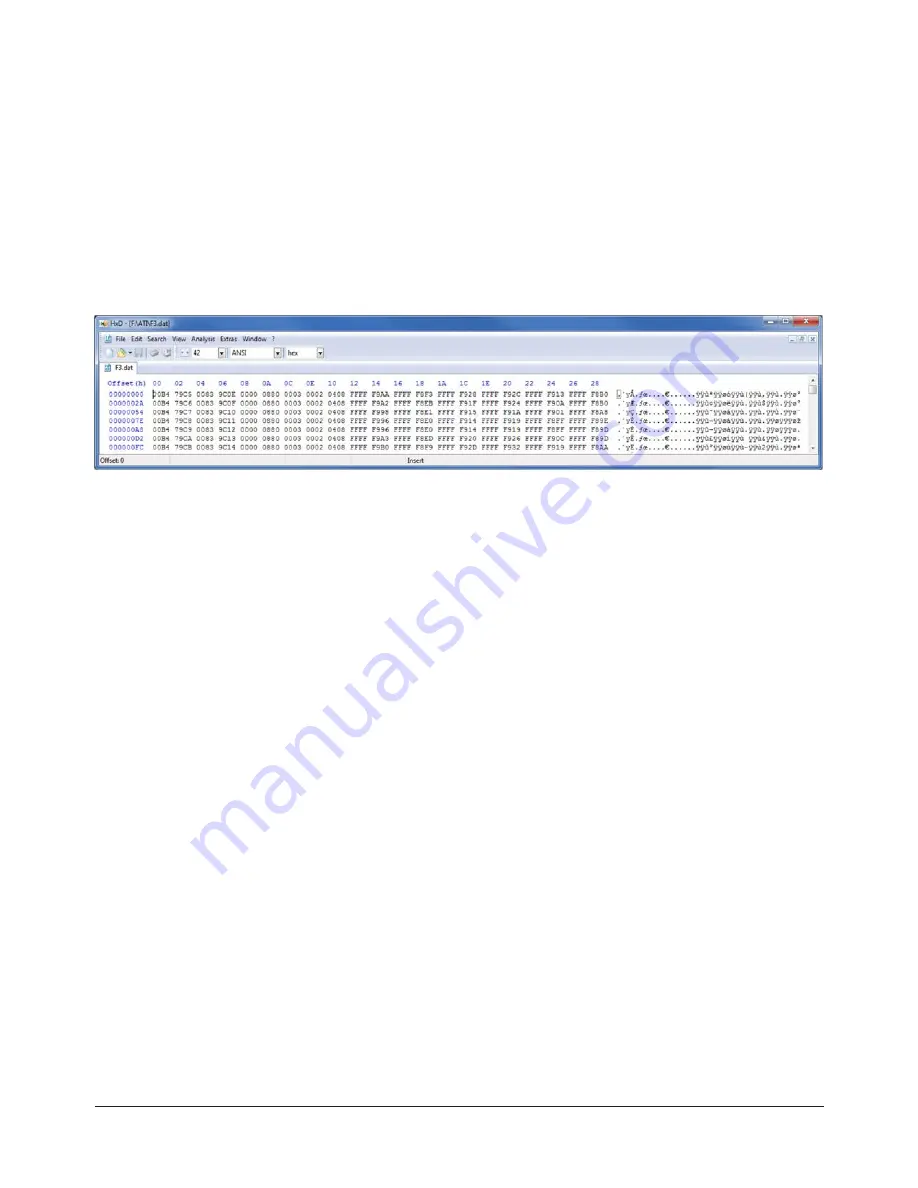
Wireless F/T Installation and Operation Manual
Document #9620-05-Wireless FT-03
Pinnacle Park • 1031 Goodworth Drive • Apex, NC 27539 USA • Tel: +1.919.772.0115 • Fax: +1.919.772.8259 • www.ati-ia.com • Email: [email protected]
40
SDREC [ON | OFF] => Stream packets to MicroSD: on, off, or toggle
This command streams data (in the standard packet format, which is also used for UDP packets) to the
MicroSD™ card. All data is placed in the \ATI subdirectory, which is created if it is not already present. The
file ati.ini is also created within this subdirectory if it is not already present. Each time that the SDREC ON
command is issued, a new file Fn.dat file is created. Note that n is the next sequential file number.
Note that the file system only supports file sizes up to 4 G bytes.
The data can be read by placing the MicroSD™ card into a computer that supports the FAT file system. A
Micro SD to USB adapter may be required.
When viewed with the HxD utility, data for a single transducer may look like:
Figure 5.1—Fn.dat file format
Note that if an interruption occurs while this data is being written (such as the removal of the MicroSD™
card or the battery) the open file will generally lose any data written within the last two seconds. The
interruption may also cause lost file system clusters, which will reduce the storage capacity of the card.
As the WNET unit does not contain a file system repair utility, lost clusters may be repaired either by
formatting the card (using the SD FORMAT command, which will cause the loss of all data on the card), or
by putting the card into a computer and running the Scandisk utility. On Windows 7 machines this can be
done by opening Windows Explorer, right-clicking on the drive letter of the MicroSD™ card and selecting
Properties, clicking the Tools tab, pressing the Check Now… button, and the pressing Start.
SDUMP[filename] => File dump
This command prints a hex dump of the specified file on the MicroSD.
SF => print Serial Flash device info
This command prints information about the Serial Flash device. This command is provided for serial flash
firmware testing. For example:
SF: Maker = Silicon Storage Technology
SF: Device = SST25VF010A => 128K bytes
SF: Status = 00 BlockProtect = None
SFR [address] [length] => print Serial Flash memory of length given
This command prints Serial Flash memory starting at the given address for the given length. This command
is provided for serial flash firmware testing. For example, here we dump the first calibration area for a unit
that has no calibrations saved:
>sfr 1000 2000
SF: 001000 ffff ffff ffff ffff ffff ffff ffff ffff ................
SF: 001010 => 002fff same as above
SFW [address] [byte] => write byte to Serial Flash address given
This command allows you to write a single byte to the Serial Flash. This command is provided for serial
flash firmware testing.






























